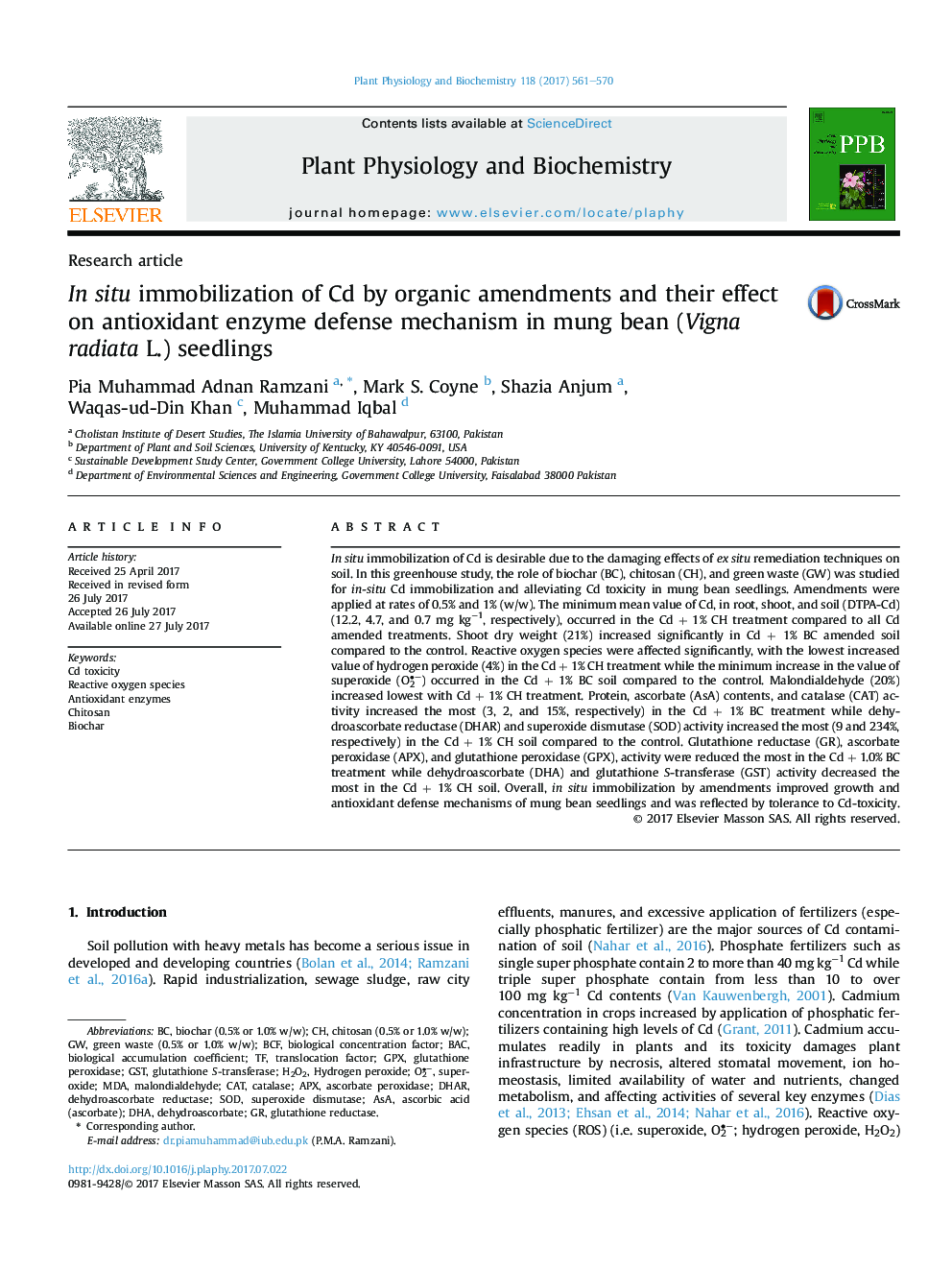| Article ID | Journal | Published Year | Pages | File Type |
|---|---|---|---|---|
| 5515472 | Plant Physiology and Biochemistry | 2017 | 10 Pages |
â¢Assessment of in situ immobilization effects of chitosan (CH), biochar (BC), and green waste compost (GW), in Cd-contaminated soil.â¢Evaluation of antioxidant defense mechanisms and Cd partitioning in mung bean seedling under Cd immobilized in soil.â¢To observe the generation of reactive oxygen species.
In situ immobilization of Cd is desirable due to the damaging effects of ex situ remediation techniques on soil. In this greenhouse study, the role of biochar (BC), chitosan (CH), and green waste (GW) was studied for in-situ Cd immobilization and alleviating Cd toxicity in mung bean seedlings. Amendments were applied at rates of 0.5% and 1% (w/w). The minimum mean value of Cd, in root, shoot, and soil (DTPA-Cd) (12.2, 4.7, and 0.7 mg kgâ1, respectively), occurred in the Cd + 1% CH treatment compared to all Cd amended treatments. Shoot dry weight (21%) increased significantly in Cd + 1% BC amended soil compared to the control. Reactive oxygen species were affected significantly, with the lowest increased value of hydrogen peroxide (4%) in the Cd + 1% CH treatment while the minimum increase in the value of superoxide (O2â¢-) occurred in the Cd + 1% BC soil compared to the control. Malondialdehyde (20%) increased lowest with Cd + 1% CH treatment. Protein, ascorbate (AsA) contents, and catalase (CAT) activity increased the most (3, 2, and 15%, respectively) in the Cd + 1% BC treatment while dehydroascorbate reductase (DHAR) and superoxide dismutase (SOD) activity increased the most (9 and 234%, respectively) in the Cd + 1% CH soil compared to the control. Glutathione reductase (GR), ascorbate peroxidase (APX), and glutathione peroxidase (GPX), activity were reduced the most in the Cd + 1.0% BC treatment while dehydroascorbate (DHA) and glutathione S-transferase (GST) activity decreased the most in the Cd + 1% CH soil. Overall, in situ immobilization by amendments improved growth and antioxidant defense mechanisms of mung bean seedlings and was reflected by tolerance to Cd-toxicity.
